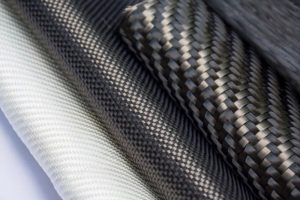Choosing the Right Fiberglass Cloth
Fibreglass is versatile and strong and can be moulded into almost any shape you can think of. However, with so many types of fibreglass cloth and resins available, selecting the right materials for your specific needs can be a bit overwhelming. We at Fiberglass-Sales A/Asia are here to guide you through this process with expert advice to make your selection as smooth as possible.
Understanding Fiberglass Cloth
Fibreglass cloth comes in various weights, weaves, and finishes, each suited for different applications. Here’s how to navigate your options.
- Weight: Fibreglass cloth is measured in ounces per square yard. Lighter cloths (4 oz to 6 oz) are great for surface layers and adding a sleek finish. Heavier cloths (10 oz and up) are used for building thickness and strength.
- Weave: The weave affects the cloth’s strength and workability. Plain weaves are easy to work with and are excellent for flat surfaces. Twill weave offers more drape, making it better for complex shapes. Satin weave (or crowfoot weave) is even more pliable and ideal for highly detailed moulds.
- Finish: The finish on fibreglass cloth affects how well it bonds with resin. Most cloths are treated with a finish that makes them compatible with specific resin types. Ensure the cloth’s finish matches the resin you plan to use.
Selecting the Right Resin
Resins are the binding agent that hardens the fibreglass cloth into a solid form. Polyester and epoxy are the two primary types of resins used in fibreglass projects.
- Polyester Resin: This cost-effective option is perfect for general projects, such as making moulds or straightforward repairs. It’s easier to work with and quick to cure but is not as strong or durable as epoxy resin.
- Epoxy Resin: Epoxy is the go-to for projects requiring superior strength, durability, and moisture resistance. It bonds well with most surfaces and is less prone to shrinking. While it’s more expensive and requires a bit more expertise to use, its benefits are well worth it for high-performance applications.
Matching Cloth and Resin
When selecting your materials, consider the end use of your project. Here’s a simple guide:
- Repairs and Small Projects: Light to medium-weight cloth with polyester resin. This combination is easy to work with and sufficient for basic repairs or small crafts.
- Boats and Watercraft: Use medium to heavy cloth with epoxy resin for superior strength and water resistance. This is crucial for the durability and safety of watercraft.
- Automotive Parts: Heavy cloth with epoxy resin. The strength and durability are necessary to withstand the stresses that automotive parts are subjected to.
- Cosmetic Surfaces: A light cloth with epoxy resin gives a smooth finish and strong bond, ideal for surfaces that need an excellent appearance and moderate strength.
Tips for Success
- Always ensure the work area is well-ventilated and wear protective gear, including gloves and a mask.
- Prepare all materials and tools before mixing your resin, as you’ll have limited working time once it’s mixed.
- Practice on small samples to get a feel for the materials and refine your technique before tackling larger projects.
Conclusion
Selecting the right fibreglass cloth and resin doesn’t have to be complicated. By understanding the basics of cloth weights, weaves, finishes, and the differences between polyester and epoxy resins, you can confidently choose the best materials for your project. Remember, the key to a successful fibreglass project lies in careful planning, preparation, and practice. Happy fiberglassing!
Call (02) 9820 1595
For Expert fibreglass advice
or send a message below
We help you create successful projects.
Since opening in 1951 our range of products has grown massively. So has our knowledge. There is not much we haven't seen before so call us first. We can save you making costly mistakes.


